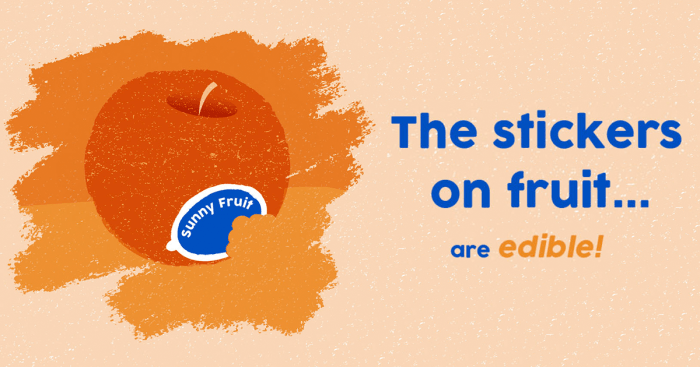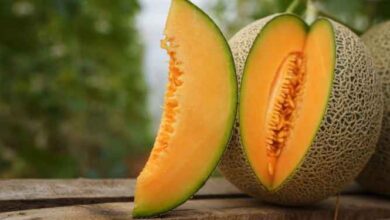
8 Facts About Food That Will Totally Creep You Out
8 Facts About Food That Will Totally Creep You Out – Ever wondered what’s really in your food, or how it got there? This post delves into the unexpected origins, surprising ingredients, and bizarre history of the things we eat.
Get ready to have your culinary world turned upside down!
From the origins of seemingly ordinary foods to the hidden ingredients we consume without knowing, we’ll explore the fascinating world of food through a lens of curiosity and a dash of creepiness. You’ll discover how food impacts our bodies, minds, and the environment in ways you never imagined.
So buckle up, because this journey into the world of food might just leave you with a newfound appreciation for the things we take for granted.
Food’s Hidden Origins

We often take for granted the food we eat, assuming it comes from familiar sources. However, many common foods have surprising origins that may leave you questioning what you thought you knew about your favorite dishes. These unexpected origins can be traced back to historical events, cultural exchanges, and even accidental discoveries.
Food’s Surprising Origins
The origins of some common foods are more intriguing than you might think. Let’s explore some examples:
| Food | Original Source | Interesting Fact | Historical Significance |
|---|---|---|---|
| Coffee | Ethiopia | Legend has it that a goat herder named Kaldi discovered coffee after noticing his goats’ unusual energy after eating berries from a certain tree. | Coffee played a significant role in trade and cultural exchange between the Middle East and Europe, and eventually spread globally. |
| Chocolate | Mesoamerica | The Aztecs used cacao beans to create a bitter drink called xocolatl, which was often flavored with spices and chili peppers. | Chocolate was introduced to Europe by Spanish conquistadors in the 16th century and quickly became a popular luxury item. |
| Tea | China | The legend of tea’s discovery involves a Chinese emperor who accidentally drank water that had been boiled with tea leaves. | Tea has been a staple in Chinese culture for centuries and is enjoyed in various forms around the world. |
| Potatoes | The Andes Mountains | Potatoes were domesticated by indigenous people in the Andes Mountains and have been a major food source for centuries. | The introduction of potatoes to Europe in the 16th century revolutionized agriculture and helped to alleviate food shortages. |
The Unexpected Ingredients We Eat

We often think of food in terms of its main components: fruits, vegetables, grains, and meats. But the world of food is far more diverse and complex, and many of the things we eat contain surprising and unexpected ingredients. These ingredients may be added for flavor, texture, or preservation, but they often have a fascinating history and cultural significance.
Unexpected Ingredients in Common Foods
Many everyday foods contain ingredients that might surprise you. These ingredients are often used to enhance flavor, texture, or appearance, but they can also play a role in preserving the food or preventing spoilage.
- Cochineal Extract: This natural red dye, derived from the dried bodies of female cochineal insects, is often used to color foods like candy, yogurt, and beverages. Cochineal extract has been used as a food coloring for centuries, dating back to the Aztecs who used it to dye fabrics and food.
Today, it is a common ingredient in many processed foods.
- Shellac: This resinous substance is produced by a type of insect called the lac bug. It is used to create a glossy coating on candies, fruits, and other foods. Shellac is also used in pharmaceuticals, cosmetics, and other products.
- Carmine: This vibrant red dye is derived from the crushed bodies of cochineal insects. It is often used to color foods like yogurt, ice cream, and candy. Carmine is also used in cosmetics and pharmaceuticals.
The Science Behind Food’s Effects: 8 Facts About Food That Will Totally Creep You Out
You might think food is just fuel for your body, but it’s much more than that. What you eat can significantly influence your mood, energy levels, and even how you think. It’s all about the fascinating interplay between food and your body’s chemistry.
The Impact of Food on Mood and Energy
The connection between food and mood is a complex one. Certain foods can trigger the release of neurotransmitters, chemicals that act as messengers in the brain. For example, foods rich in tryptophan, like turkey and cheese, can boost serotonin levels, a neurotransmitter associated with feelings of happiness and well-being.
- Foods High in Tryptophan: These foods, such as turkey, cheese, and eggs, can elevate serotonin levels, promoting feelings of relaxation and contentment.
- Foods Rich in Tyrosine: Tyrosine, found in almonds, avocados, and fish, helps produce dopamine and norepinephrine, neurotransmitters linked to focus, motivation, and alertness.
- Foods High in Omega-3 Fatty Acids: Salmon, walnuts, and flaxseeds are rich in omega-3s, which have been shown to improve mood and reduce symptoms of depression.
Furthermore, the impact of food on energy levels is largely dependent on the type of carbohydrates consumed.
- Simple Carbohydrates: Sugary foods and drinks provide a quick energy boost but lead to a rapid crash in blood sugar levels, resulting in fatigue and cravings.
- Complex Carbohydrates: Foods like whole grains, legumes, and vegetables are digested slowly, providing a sustained release of energy and preventing sugar spikes.
Food and Cognitive Function
The brain is a complex organ that relies on a steady supply of nutrients to function optimally.
| Food | Effect | Scientific Explanation | Real-World Example |
|---|---|---|---|
| Blueberries | Improved Memory | Blueberries are rich in antioxidants, which protect brain cells from damage and may enhance cognitive function. | Studies have shown that consuming blueberries regularly can improve memory performance in older adults. |
| Fatty Fish | Enhanced Brain Health | Omega-3 fatty acids, abundant in fatty fish like salmon and tuna, are crucial for brain development and function. | Consuming fatty fish regularly may help reduce the risk of cognitive decline and age-related brain diseases. |
| Dark Chocolate | Improved Blood Flow to the Brain | Flavanols in dark chocolate can improve blood flow to the brain, potentially enhancing cognitive function. | A small piece of dark chocolate daily may help improve alertness and focus. |
The History of Food Preservation
Food preservation, the art of extending the shelf life of food, has been a cornerstone of human civilization. From the earliest hunter-gatherer societies to modern-day supermarkets, preserving food has been essential for survival, trade, and cultural development.
Methods of Food Preservation
Food preservation methods have evolved over millennia, driven by necessity, innovation, and cultural influences. Early methods were often simple and relied on natural processes.
- Drying:One of the oldest methods, drying removes moisture, inhibiting microbial growth. This method was widely used for fruits, vegetables, meat, and fish, with variations like sun-drying and smoke-drying.
- Salting:This technique, popular for meat and fish, draws out moisture and creates a salty environment that inhibits bacteria. Salting also imparts a unique flavor profile.
- Fermentation:This process uses beneficial microorganisms to transform food, extending its shelf life and producing unique flavors and textures. Examples include sauerkraut, kimchi, yogurt, and cheese.
- Smoking:This method, often used for meat and fish, involves exposing food to smoke, which adds flavor and inhibits microbial growth. Smoke also contributes to preservation by drying and creating a protective layer.
- Pickling:This method involves immersing food in a vinegar-based solution, creating an acidic environment that inhibits microbial growth. Pickling is commonly used for vegetables, fruits, and meat.
Consequences of Food Preservation
These early preservation methods, while effective, also had unexpected consequences.
- Nutritional Loss:Some methods, like drying and salting, can lead to the loss of certain vitamins and minerals.
- Safety Concerns:Improper preservation techniques can result in food spoilage and foodborne illnesses.
- Environmental Impact:Traditional methods, such as drying and salting, can be resource-intensive and contribute to environmental degradation.
Impact on Food Safety and Cultural Practices
Food preservation has played a crucial role in ensuring food safety and influencing cultural practices around the world.
- Food Safety:By inhibiting microbial growth, preservation methods have significantly reduced the risk of foodborne illnesses, allowing people to store and consume food safely over extended periods.
- Cultural Practices:Food preservation techniques have shaped culinary traditions and cultural identities. Specific preservation methods, such as pickling, fermenting, and smoking, are often associated with particular regions and cuisines.
Timeline of Food Preservation
The history of food preservation can be traced back thousands of years, with advancements in technology and scientific understanding leading to new and more efficient methods.
- Ancient Times:Early civilizations relied on basic methods like drying, salting, smoking, and fermentation. These techniques were essential for survival in harsh climates and during times of scarcity.
- Middle Ages:The development of sugar and vinegar production led to new methods like pickling and preserving in sugar syrups. This period also saw the emergence of specialized food preservation techniques, such as canning and pickling.
- 18th Century:The invention of canning by Nicolas Appert in 1809 revolutionized food preservation. Canning allowed food to be preserved for longer periods and transported over longer distances.
- 19th Century:Louis Pasteur’s discoveries in the field of microbiology led to a better understanding of food spoilage and the development of pasteurization, a process that kills harmful bacteria in milk and other beverages.
- 20th Century:The development of refrigeration and freezing technologies further revolutionized food preservation. These methods allowed food to be stored for longer periods at lower temperatures, reducing the risk of spoilage and extending shelf life.
- 21st Century:Modern food preservation methods include irradiation, high-pressure processing, and modified atmosphere packaging. These techniques offer advantages in terms of safety, quality, and shelf life.
Food’s Role in History and Culture
Food is more than just sustenance; it is a powerful force that has shaped civilizations, driven historical events, and influenced cultural practices across the globe. From ancient empires to modern societies, the pursuit and consumption of food have intertwined with human history, leaving an indelible mark on our social, economic, and political landscapes.
The Influence of Food on Social Hierarchies
Food has always played a crucial role in defining social hierarchies and power dynamics. Throughout history, access to certain foods, particularly those considered rare or luxurious, has been a marker of wealth and status. For instance, in ancient Rome, the consumption of exotic spices like pepper and saffron was reserved for the elite, signifying their power and influence.
Similarly, in medieval Europe, the ability to afford meat, especially beef, was a privilege enjoyed by the aristocracy, while the peasantry relied on grains and vegetables. This pattern continues today, where access to organic produce, gourmet foods, and rare ingredients often reflects social standing and economic privilege.
- In ancient Egypt, the pharaohs enjoyed a lavish diet of meat, fish, fruits, and vegetables, while the commoners subsisted on bread, beer, and lentils.
- During the Renaissance, the wealthy Italian aristocracy indulged in elaborate feasts featuring elaborate dishes and exotic ingredients, while the lower classes ate simple, hearty meals.
- In modern times, the popularity of organic and locally sourced foods has become a marker of social consciousness and affluence.
Food and Religious Beliefs, 8 facts about food that will totally creep you out
Food plays a central role in many religions, shaping dietary practices and rituals. Religious beliefs often dictate what can and cannot be consumed, leading to diverse culinary traditions around the world. For example, Hinduism’s emphasis on vegetarianism has influenced the development of a rich and varied vegetarian cuisine in India.
Similarly, the Islamic dietary laws, known as Halal, prohibit the consumption of pork and alcohol, shaping the culinary landscape of Muslim communities worldwide.
- Judaism prohibits the consumption of pork and shellfish, leading to the development of a distinct kosher cuisine.
- Buddhism encourages vegetarianism and mindful eating, contributing to the popularity of vegetarian and vegan diets in many Asian cultures.
- Christianity, while not having strict dietary restrictions, has developed traditions surrounding meals, such as the Eucharist in Catholicism.
The Future of Food
The future of food is a fascinating and complex landscape, shaped by a confluence of technological advancements, shifting consumer preferences, and a growing awareness of sustainability. As the global population continues to rise and resources become increasingly strained, innovative solutions are emerging to address the challenges of food production, distribution, and consumption.
Emerging Trends in Food Production and Consumption
The future of food is being redefined by a number of emerging trends that are transforming the way we produce, consume, and think about food. These trends are driven by technological advancements, changing consumer preferences, and a growing awareness of the environmental and social impacts of our food system.
Did you know that some candies are made with crushed insects? It’s true! And that’s just one of the eight creepy food facts I’ve been researching. But let’s take a break from the gross-out factor and talk about something much sweeter: baby and toddler gifts! If you’re looking for the perfect present for a little one, check out this amazing gift guide for baby and toddlers.
Now, back to those creepy food facts. Did you know that some cheeses are made with live bacteria? It’s enough to make you want to stick to the fruit and veggies!
- Vertical Farming:This innovative approach to agriculture involves growing crops in stacked layers within controlled environments, maximizing space and reducing the reliance on traditional farmland. Vertical farms are often located in urban areas, minimizing transportation costs and reducing the environmental impact of food production.
For example, AeroFarms in New Jersey is one of the largest vertical farms in the world, producing over 2 million pounds of leafy greens annually.
- Precision Agriculture:This data-driven approach utilizes sensors, drones, and artificial intelligence to optimize crop yields and resource use. Precision agriculture allows farmers to precisely target fertilizers, pesticides, and irrigation, reducing waste and improving efficiency. For example, John Deere’s precision farming equipment uses GPS technology and sensors to monitor soil conditions and adjust planting and fertilization practices, leading to increased yields and reduced environmental impact.
- Alternative Protein Sources:As concerns about the environmental impact of traditional animal agriculture grow, alternative protein sources are gaining popularity. These include plant-based meat alternatives, insect-based protein, and cultured meat, which is grown in a laboratory from animal cells. For example, Beyond Meat and Impossible Foods are leading the way in plant-based meat alternatives, while companies like Cricket One and Ento Foods are exploring the potential of insect protein.
Cultured meat, while still in its early stages of development, holds promise for reducing the environmental footprint of meat production.
- Personalized Nutrition:Advances in genomics and personalized medicine are enabling a more tailored approach to nutrition. DNA testing and other technologies can provide insights into individual nutritional needs, helping people make informed choices about their diet. This trend is leading to the development of personalized meal plans and supplements designed to optimize health and well-being.
Did you know that some cheeses are made with animal rennet, which is an enzyme extracted from the stomachs of young animals? That’s just one of the eight creepy facts about food that I recently learned. Speaking of creepy, I’m also thinking about how to make my holiday gift wrapping more sustainable this year.
I’m looking into christmas wrapping reusable adorable and green options to reduce waste. I’m sure there are plenty of other strange things about food that we’re not aware of, but at least we can do our part to make the holidays a little less creepy for the planet.
The Challenges and Opportunities of the Future of Food
The future of food presents both challenges and opportunities. Addressing these challenges is crucial for ensuring food security, environmental sustainability, and equitable access to healthy food for all.
Ever wondered what goes into your favorite snacks? Well, brace yourself because some of the ingredients might make you rethink your next munchie run. From insect parts to animal byproducts, the food industry has some pretty surprising secrets. If you’re looking for a thoughtful gift for your neighbor this Christmas, why not try a cute notepad from this list of 40 neighbor Christmas gift ideas ?
They’ll appreciate the gesture, and you can always use it to jot down your own food-related revelations after you’ve read those 8 facts about food that will totally creep you out.
- Food Waste Reduction:Food waste is a significant environmental and economic problem. Reducing food waste through improved storage, packaging, and distribution practices is essential for a more sustainable food system. For example, the Food and Agriculture Organization of the United Nations (FAO) estimates that one-third of all food produced for human consumption is wasted globally, highlighting the urgency of this issue.
- Climate Change Mitigation:The food system is a major contributor to climate change, accounting for a significant portion of greenhouse gas emissions. Developing more sustainable agricultural practices, such as regenerative farming and reduced reliance on animal products, is critical for mitigating climate change.
For example, the EAT-Lancet Commission, a group of scientists and experts, has proposed a dietary shift towards more plant-based foods to reduce the environmental impact of food production.
- Food Security and Equity:Ensuring food security and equitable access to healthy food for all is a fundamental challenge. This requires addressing issues such as poverty, hunger, and malnutrition, as well as improving food distribution systems. For example, initiatives like the World Food Programme (WFP) are working to combat hunger and malnutrition around the world.
- Technological Advancements:Emerging technologies such as artificial intelligence, robotics, and gene editing have the potential to revolutionize food production and distribution. However, it is crucial to ensure that these technologies are developed and deployed responsibly and ethically, considering their potential impacts on food systems, the environment, and society.
For example, the use of gene editing in agriculture raises ethical concerns about the potential for unintended consequences and the need for careful regulation.
Trends in the Future of Food
The future of food is a dynamic and evolving landscape, shaped by a confluence of factors. Understanding these trends is essential for navigating the challenges and opportunities that lie ahead. The following table highlights some key trends in the future of food, their potential impacts, and possible outcomes:
| Trend | Description | Impact | Potential Outcomes |
|---|---|---|---|
| Vertical Farming | Growing crops in stacked layers within controlled environments. | Increased food production efficiency, reduced reliance on traditional farmland, and reduced environmental impact. | More sustainable and efficient food production, increased urban agriculture, and reduced food transportation costs. |
| Precision Agriculture | Utilizing sensors, drones, and artificial intelligence to optimize crop yields and resource use. | Improved crop yields, reduced fertilizer and pesticide use, and increased resource efficiency. | More sustainable and efficient agricultural practices, reduced environmental impact, and increased food security. |
| Alternative Protein Sources | Exploring plant-based meat alternatives, insect-based protein, and cultured meat. | Reduced environmental impact of animal agriculture, increased protein diversity, and potentially improved animal welfare. | Shift towards more sustainable protein sources, increased consumer choice, and potentially reduced greenhouse gas emissions. |
| Personalized Nutrition | Utilizing genomics and personalized medicine to tailor nutrition plans to individual needs. | Improved health outcomes, reduced risk of chronic diseases, and increased awareness of individual nutritional needs. | More personalized and effective healthcare, increased consumer empowerment, and potentially reduced healthcare costs. |
The Psychology of Food
Food is more than just sustenance; it’s deeply intertwined with our emotions, memories, and cultural identities. Understanding the psychology of food helps us navigate our relationship with it, make healthier choices, and appreciate the powerful impact it has on our lives.
Food Cravings and Aversions
Food cravings and aversions are powerful psychological forces that shape our eating habits. They are often driven by a combination of biological, psychological, and environmental factors.
- Biological Factors:Our bodies crave certain nutrients when they are deficient, such as carbohydrates when our blood sugar is low. We may also develop aversions to foods that have made us sick in the past.
- Psychological Factors:Cravings can be triggered by stress, boredom, or emotional distress. We may also develop aversions to foods associated with negative experiences, such as a food eaten during a stressful event.
- Environmental Factors:Food advertising, social norms, and cultural influences can all play a role in shaping our cravings and aversions. For example, exposure to images of delicious food can trigger cravings, while social pressure to avoid certain foods can lead to aversions.
Emotional Connections to Food
Food can evoke powerful emotions and memories. We often associate certain foods with specific events, people, or places, creating a strong emotional connection.
- Comfort Foods:These foods provide a sense of security and nostalgia, often reminding us of happy times or familiar places. Examples include mac and cheese, pizza, or a warm bowl of soup.
- Social Foods:Sharing food with others can foster a sense of community and belonging. Food plays a central role in many social gatherings, such as holidays, celebrations, and family meals.
- Food as a Reward:We often use food as a reward for good behavior or to celebrate special occasions. This can create a positive association with food, but it can also lead to overeating and unhealthy eating habits.
The Impact of Food on Mood and Behavior
The foods we eat can significantly influence our moods, energy levels, and behavior.
- Mood Boosters:Foods rich in tryptophan, a precursor to serotonin (a neurotransmitter associated with happiness), can improve mood. Examples include turkey, salmon, and eggs.
- Energy Levels:Foods rich in carbohydrates and protein can provide sustained energy, while sugary snacks offer a quick energy boost followed by a crash.
- Cognitive Function:Foods rich in omega-3 fatty acids, antioxidants, and vitamins can improve cognitive function and memory. Examples include blueberries, walnuts, and leafy green vegetables.
Food and Well-being
A balanced and healthy diet plays a crucial role in maintaining physical and mental well-being.
- Physical Health:A diet rich in fruits, vegetables, whole grains, and lean protein supports a healthy immune system, reduces the risk of chronic diseases, and promotes optimal physical functioning.
- Mental Health:A healthy diet can improve mood, reduce stress, and enhance cognitive function. Eating a balanced diet can also help regulate blood sugar levels, which can impact mood and energy levels.
- Emotional Well-being:Food can provide comfort, pleasure, and social connection, contributing to overall emotional well-being.
Table: Psychological Factors Influencing Food Choices
| Psychological Factor | Description | Impact on Food Choices | Example |
|---|---|---|---|
| Hunger | Physiological need for food | Drives us to seek out food for sustenance | Feeling hungry after a workout and reaching for a protein bar |
| Appetite | Psychological desire for food | Influences our food choices based on cravings and preferences | Craving a slice of pizza even though you’re not actually hungry |
| Mood | Emotional state | Can influence food choices for comfort, reward, or distraction | Eating ice cream to cope with stress or sadness |
| Social Influence | Social norms and expectations | Can shape our food choices based on cultural influences or peer pressure | Ordering a dish at a restaurant because everyone else is having it |
Food and the Environment
It’s easy to think of food as simply what we eat, but the truth is that our food choices have a profound impact on the environment. From the land used to grow crops to the energy required to transport and prepare food, every stage of the food system leaves its mark on the planet.
The Environmental Impact of Food Production and Consumption
The environmental impact of food is a complex issue, with many interconnected factors at play. From the land used to grow crops to the energy required to transport and prepare food, every stage of the food system leaves its mark on the planet.
- Land Use:Food production is a major driver of deforestation, habitat loss, and soil degradation. The clearing of forests for agriculture releases vast amounts of carbon dioxide into the atmosphere, contributing to climate change.
- Water Use:Agriculture accounts for a significant portion of global freshwater use. The production of certain crops, such as almonds and beef, is particularly water-intensive.
- Greenhouse Gas Emissions:Food production and consumption are responsible for a substantial portion of global greenhouse gas emissions. Animal agriculture, in particular, is a major source of methane, a potent greenhouse gas.
- Pollution:Runoff from farms can pollute waterways with fertilizers, pesticides, and animal waste. These pollutants can harm aquatic life and degrade water quality.





